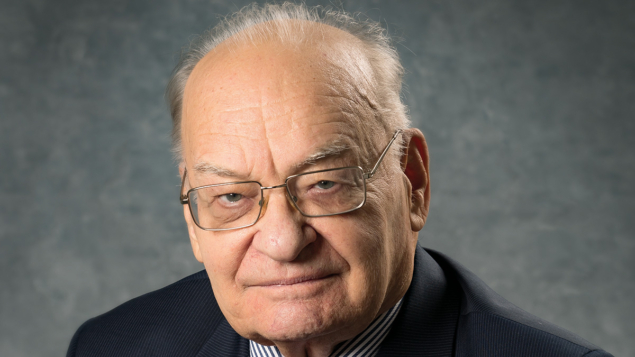
Igor Savin, honorary director of the Veksler and Baldin Laboratory of High Energy Physics (VBLHEP) at JINR, Dubna died on 8 July 2023 after a long illness. Born in Bryansk region, Russia in 1930, he graduated from Lomonosov Moscow State University and started his work in Dubna in 1955. He gained international prestige by studying interference in K-meson decays in experiments at CERN, which confirmed the violation of CP invariance. In 1967 he defended his PhD thesis based on the results of his work, and in 1974 his DSc thesis. The latter included classic results on kaon regeneration that were obtained by an international collaboration including physicists from Bulgaria, Hungary, Czechoslovakia and East Germany formed under Savin’s leadership. The collaboration conducted a series of experiments at the U-70 accelerator in Protvino, showing that the regeneration cross section decreases as a function of the kaon momentum in line with the Pomeranchuk theorem on the asymptotic equality of total cross sections for particles and antiparticles.
In 1974 Igor Savin led a small group of physicists from Dubna to visit CERN to identify an experiment where JINR’s participation would be significant. Thanks to his enthusiasm and organisational talent, this led to the first large-scale joint CERN–JINR project, NA4 at the SPS, which was approved in 1975 and finished in 1995. He led the JINR team participating in the study of deep inelastic scattering of muons from nucleons and nuclei. This research established γ/Z interference in the electroweak interactions of muons on nuclei, indicating the existence of an intermediate Z-boson discovered at CERN a year and a half later, and enabled the structure functions of protons and deuterons to be measured at percent levels. The latter were shown to be in agreement with the new theory of strong interactions, QCD, and proved that the structure functions of free and bound nucleons in the nucleus differ. This first equal cooperation between JINR and CERN contributed to the development at Dubna of the most advanced technologies and promoted strong collaboration with the global scientific community.
Igor Savin founded a new scientific direction at JINR: the experimental and theoretical study of the spin structure of nucleons and nuclei, which has gone from strength to strength. Igor headed the JINR group in the SMC experiment at CERN, in which the spin-dependent structure functions of protons and deuterons were measured and a small contribution of the valence quarks to the nucleon spin was found. He also led the JINR team in the COMPASS experiment at CERN and actively participated in the HERMES experiment at DESY to further study the nucleon spin structure in electron scattering reactions on longitudinally and transversely polarised nucleons.
As director of VBLHEP JINR, Igor Savin paid great attention to the development of international scientific cooperation, which is the backbone of the laboratory. The main task was to perform research at external accelerators at IHEP, CERN, DESY, Brookhaven and other world centres. His work has been recognised with numerous awards, including the gold medal of the Czech Academy of Sciences and the medals of the Hungarian People’s Republic and the German Democratic Republic. He was a scientist with a worldwide reputation, who helped create the glorious history of JINR. On the occasion of his 90th birthday, Carlo Rubbia said: “Igor, your anniversary celebration represents for all of us a unique result to which we have been involved over many decades and of which we are extremely proud”.
Igor Savin leaves a deep mark on science and a bright memory to everyone who had the honour and privilege to call him their friend, colleague or mentor. A wonderful man and a true scientist will be missed by all who knew and loved him.







